This article was co-authored by Meredith Brinster, PhD and by wikiHow staff writer, Danielle Blinka, MA, MPA. Meredith Brinster serves as a Pediatric Developmental Psychologist in the Dell Children’s Developmental and Behavioral Pediatrics Program and as a Clinical Assistant Professor in the Department of Psychiatry and Behavioral Sciences at Dell Medical School of The University of Texas at Austin. With over five years of experience, Dr. Brinster specializes in evaluating children and adolescents with developmental, behavioral, and academic concerns, including autism spectrum disorder, developmental delay, intellectual disability, anxiety, attention problems, and learning disabilities. Her current research focuses on early biomarkers of autism spectrum disorder, as well as improving access to care. Dr. Brinster received her BA in Psychological and Brain Sciences from Johns Hopkins University and her doctorate in Educational Psychology from the University of Texas at Austin. She completed her clinical internship in pediatric and child psychology at the University of Miami Medical School and Mailman Center for Child Development. She is a member of the Society for Research in Child Development (SRCD) and the American Psychological Association (APA).
There are 7 references cited in this article, which can be found at the bottom of the page.
This article has been viewed 11,885 times.
Selective mutism may feel frustrating or scary, but if you're struggling to speak in certain situations, there are lots of treatments that might help. Since selective mutism in adults seems to be caused by social anxiety, talking to a therapist, picking up a few new coping skills, and gradually exposing yourself to some social situations might make a world of difference. And don't worry if you feel a bit overwhelmed -- everyone is different, and you'll have the best results if you take your time and progress through treatment at your own pace. You can do it!
Steps
Working with a Therapist
-
1Get an official diagnosis from a qualified therapist. Recognizing symptoms of selective mutism in yourself can be both scary and comforting. Overcoming this disorder can be challenging, but you may feel validated knowing what’s causing you to have trouble speaking. Talk to a therapist who’s experienced in treating selective mutism to find out if you might have the condition. You may have selective mutism if you have the following symptoms:[1]
- You can’t speak in social situations or when you’ll be overheard.
- You can speak normally when you’re with someone you feel comfortable with.
- Your inability to speak greatly impacts your life.
- Your mutism has lasted for 1 month (2 months in a new situation).
- Your mutism isn’t a symptom of another condition.
-
2Undergo cognitive-behavioral therapy (CBT) to overcome your anxiety. Your therapist will guide you through using CBT to deal with the social anxiety that makes it hard for you to talk to others. CBT helps you understand why you think and act like you do, and it teaches you how to change your thoughts and behaviors. Do your CBT exercises as recommended by your therapist to help you cope with your fears and change your behavior.[2]
- For instance, your therapist may help you learn to cope when you feel anxious in a social situation. They might also teach you how to self-soothe so you don’t get overwhelmed.
- If you don’t have a therapist, ask your doctor for a referral or look for a therapist online. Check your therapist’s website to see if they have experience treating selective mutism.
Advertisement -
3Try group therapy so you can do exercises with others. Group therapy is useful for selective mutism because you’ll be working with other people who share your condition. Your therapist will lead the group through exercises to help you get comfortable communicating with each other. This can vary from nonverbal communication to full conversations. Ask your therapist if there are groups that meet in your area.[3]
- Your doctor may also be open to starting a therapy group.
-
4Talk to your doctor about taking an antidepressant to treat your anxiety. While there’s no medication for selective mutism, you may take an antidepressant to help you manage your anxiety. Ask your doctor if an antidepressant may be a good option for you. Then, take your medication exactly as directed.[4]
- Typically, antidepressants aren’t the first course of treatment for selective mutism. However, your doctor might recommend them if you’re struggling to deal with your anxiety.
-
5See a speech and language pathologist to improve your speaking skills. You may not need to work with a speech and language pathologist if you don’t have any issues with your speech patterns. However, they can help you overcome any speech problems that make you feel anxious about speaking. Request a referral to a speech and language pathologist from your doctor or therapist if you think they can help you. Then, meet with them to find out what treatments might work for you.[5]
- You may be able to set up an appointment with a speech and language pathologist on your own.
- Your treatment may be covered by insurance, so check your benefits.
Doing Behavioral Therapy Exercises
-
1Practice your social skills to help you feel less nervous. You may have social anxiety because you don’t feel confident about your social skills. Fortunately, this is a problem you can fix. Social skills include greeting others, making small talk, and continuing a conversation. Ask a person you feel comfortable with to help you practice small talk and conversations.[6]
- You might also prepare conversation topics about general topics. For instance, practice talking about the weather or your favorite TV shows. You might practice saying things like, “I can’t wait for the next episode of 911,” or “Can you believe this rain today?”
-
2Reward yourself when you speak or confront a social fear. Your selective mutism is really hard to overcome, so you deserve a treat when you have a successful interaction with someone or face a scary social situation. Additionally, rewarding yourself will encourage you to keep trying to improve your social skills. Create a set of rewards that incentivizes you, like eating a piece of candy, buying yourself something small, or playing a video game you like.[7]
- For instance, you might stop and get your favorite coffee drink, but only if you order it face-to-face. Similarly, you could keep candy in your desk at work and reward yourself every time you talk to someone you normally freeze up around.
Variation: Ask someone you trust to give you rewards if you want more accountability. For instance, a close friend or family member could give you your rewards.
-
3Try stimulus fading to get more comfortable talking to people. During a stimulus fading exercise, you’ll talk to someone you feel comfortable with and then transition to a conversation with someone you don’t know well. Start a one-on-one conversation with someone you’re able to talk to. Someone you struggle to talk to will join you during your conversation, then the first person will leave. Do your best to continue the conversation with the new person.[8]
- The purpose of stimulus fading is to help you confront what scares you in small amounts until you feel less nervous.
- It’s okay if you freeze up when the new person comes into the room. Just keep trying until you’re successful.
-
4Use desensitization to get used to hearing yourself speak. Desensitization helps you get used to speaking aloud and hearing your own voice without the pressure of talking to someone else. Go somewhere you can be comfortable and alone. Then, make audio or video recordings of yourself speaking. At first, just watch them yourself. When you feel ready, send a recording or video to someone else.[9]
- For instance, you might start by recording yourself reading aloud. Then, record yourself talking about something you like. Later, record a message for someone and send it to them.
-
5Try a shaping exercise to get comfortable talking aloud. This exercise helps you feel comfortable hearing your voice and helps you gradually learn to talk to others. At first, just read aloud to yourself so you hear your own voice. When you’re ready, read aloud to someone else. Once that feels easier, try talking to the person who’s listening to you read.[10]
- If necessary, read to the other person from another room or while facing away from them. Take small steps so you don’t feel overwhelmed.
-
6Do exposure-based therapy to help you get used to speaking up. During exposure therapy, say words or phrases in different situations that spark your anxiety. Start with a situation that causes you minor stress, like speaking aloud in a public place where someone could overhear you. Then, say a word aloud in a slightly more stressful situation, such as in a store when other shoppers are around. Gradually progress through stressful situations to help you get more comfortable speaking.[11]
- Mild stressors might include answering a phone call, saying hello to a stranger, or ordering food. Slowly work your way up to situations that really scare you, like talking to someone at a party.
Confronting Your Social Anxiety
-
1Expose yourself to social situations even if you’re not going to talk. Unfortunately, avoiding social situations increases your social anxiety and reinforces your fears. While it might feel scary, going in public and attending social functions will help you gradually feel more comfortable being around others. Don’t worry about talking to anyone. Just spend time around people you don’t know well.[12]
- For instance, you might go walk around the grocery store or a local shopping center.
- If you get invited to a party, go! Additionally, attend holiday events hosted by family or friends.
-
2Don’t pressure yourself to talk if you aren’t ready. When you feel like you have to talk, it can make you feel super overwhelmed, which makes it even harder to overcome your selective mutism. Tell yourself that you’ll try to talk but it’s okay if it doesn’t happen. In time, this will help you feel less anxious about social situations.
- You should still try to talk if you can, but don’t feel obligated to do it.
-
3Ask people to communicate via text while you get used to them. Your selective mutism likely makes it difficult for you to make connections at work, at school, or in your social life. Texting or emailing may help you bridge the communication gap with new people. Connect with people digitally until you think you’re ready to try to talk to them.[13]
- You might text a new coworker something like, “Hey, it’s hard for me to talk to people I’ve just met because of my anxiety. Do you mind communicating through text and email for now?”
- If you’re working with another student in your class, you might get their email from your professor or the school directory. Then, message them something like, “Hi, I’m going to be your lab partner this year. It’s really hard for me to speak to people I don’t know, so can we text each other instead?”
Tip: You don’t need to explain why you have trouble speaking to people unless you feel comfortable doing so. You don’t owe anyone an explanation.
-
4Find ways to communicate non-verbally when it’s necessary. Non-verbal communication like pointing, nodding, or miming can help you communicate your needs without having to speak. Practice using gestures and nods to help you express what you need. Additionally, pay attention to what works and what doesn’t to help you in the future.[14]
- For instance, you might point to item to show that you need it. Additionally, you could use a thumbs up or thumbs down to say “yes” or “no.” Similarly, you might wave hello and goodbye to coworkers instead of saying it.
-
5Practice talking to others by answering simple questions. You might get overwhelmed when you have to answer questions, which can make it even harder for you to overcome your selective mutism. Answering practice questions can help you feel more comfortable. Give a list of simple questions to someone you trust. Have them ask you the questions, then answer them as best as you can. When you’re ready, get someone new to ask you the questions.[15]
- You might use questions like, “What’s your favorite color?” “What was the last movie you saw?” “Where do you want to go on vacation?” “What’s your favorite food?” or “What do you do in your spare time?”
-
6Join a support group for people with selective mutism. You might feel alone sometimes, but there are people who understand what you’re going through. A support group can help you feel good about yourself. Additionally, you can learn from others who’ve been where you are and can get support when you’re struggling. Ask your therapist to help you find a support group or search for one online.[16]
- You may be able to find a support group online if you can’t go to one in person.
References
- ↑ https://www.nhs.uk/conditions/selective-mutism/
- ↑ https://www.anxiety.org/selective-mutism
- ↑ https://mint.fiu.edu/get-help/services/programs-for-selective-mutism/
- ↑ https://www.anxiety.org/selective-mutism
- ↑ https://www.ncbi.nlm.nih.gov/pmc/articles/PMC2861522/
- ↑ https://www.asha.org/practice-portal/clinical-topics/selective-mutism/
- ↑ https://www.asha.org/practice-portal/clinical-topics/selective-mutism/
- ↑ https://www.ncbi.nlm.nih.gov/pmc/articles/PMC2861522/
- ↑ https://www.nhs.uk/conditions/selective-mutism/
- ↑ https://www.anxiety.org/selective-mutism
- ↑ https://www.asha.org/practice-portal/clinical-topics/selective-mutism/
- ↑ https://www.selectivemutism.org/resources/archive/online-library/selective-mustism-exposure-ideas-for-teens-young-adults/
- ↑ https://www.nami.org/Blogs/NAMI-Blog/January-2017/Selective-Mutism-Frozen-in-Silence
- ↑ https://www.nami.org/Blogs/NAMI-Blog/January-2017/Selective-Mutism-Frozen-in-Silence
- ↑ https://www.selectivemutism.org/resources/archive/online-library/selective-mustism-exposure-ideas-for-teens-young-adults/
- ↑ https://www.nhs.uk/conditions/selective-mutism/
- ↑ https://www.nhs.uk/conditions/selective-mutism/
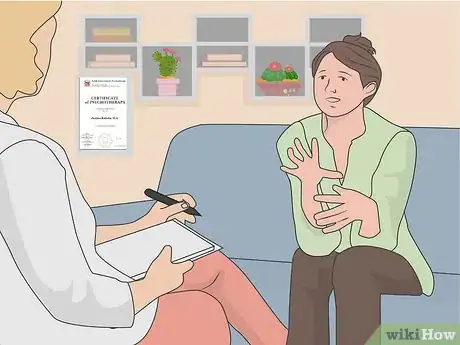


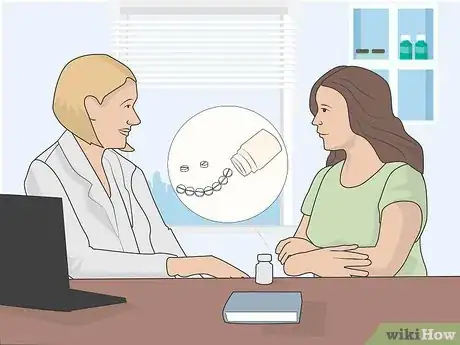
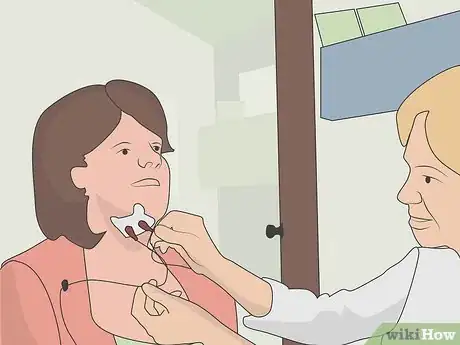



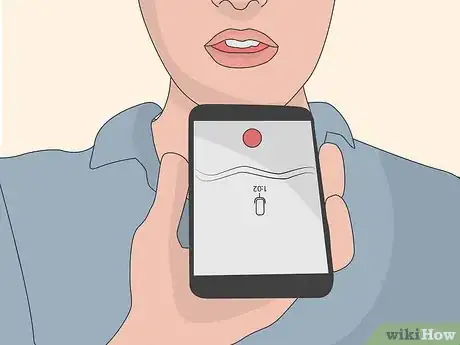













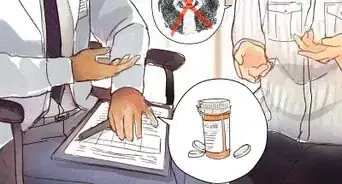























































Medical Disclaimer
The content of this article is not intended to be a substitute for professional medical advice, examination, diagnosis, or treatment. You should always contact your doctor or other qualified healthcare professional before starting, changing, or stopping any kind of health treatment.
Read More...